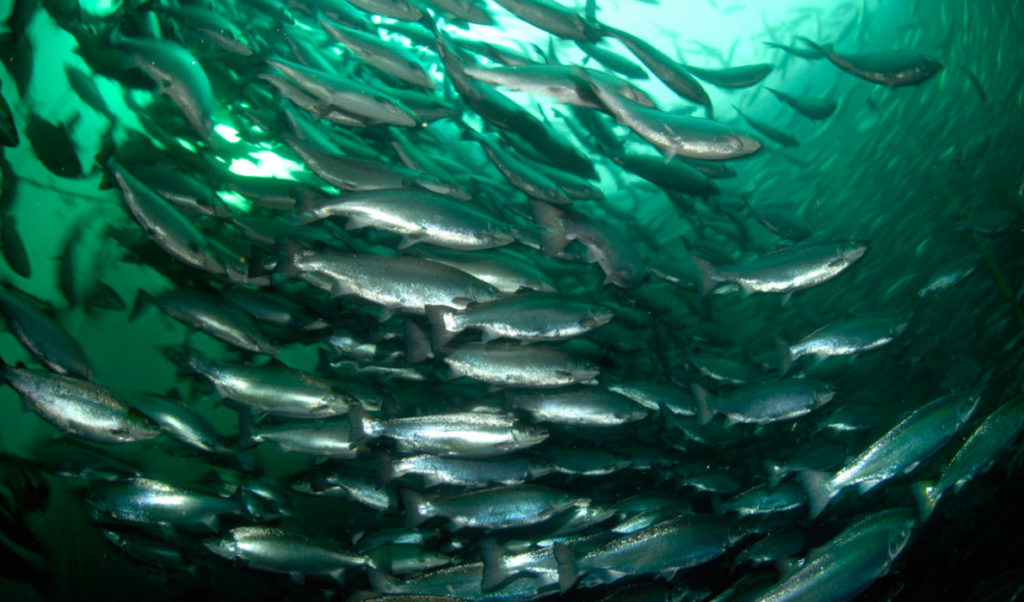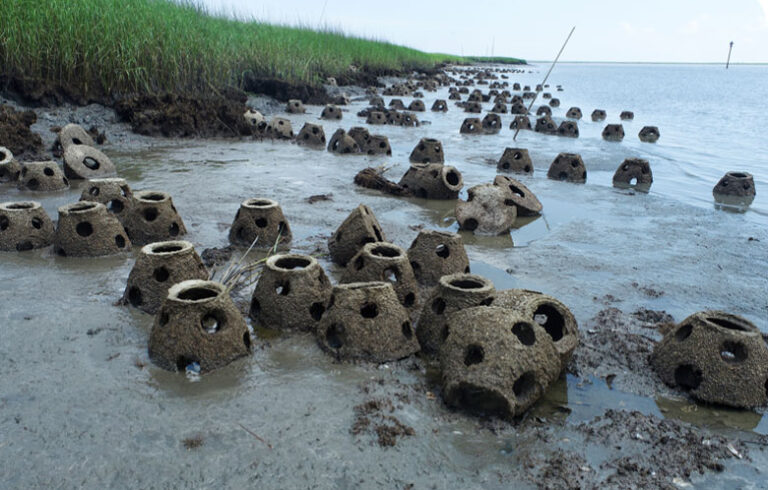By Catherine Schmitt
In January, the Monterey Bay Aquarium, the institution behind the authoritative Seafood Watch rating system, moved Maine-farmed Atlantic salmon out of the red and into the yellow list of “good alternatives.”
According to Seafood Watch, the upgrade is primarily the result of “stringent operating permit mandates” that have prevented fish from escaping farm containment systems.
The ranking is backed up by a 120-page report that evaluates a series of criteria including impacts on water quality and habitat, chemical use, feed, and the escape of farmed fish into the wild, based on independent scientific reports and peer-reviewed journals, and data provided by regulatory agencies and Cooke Aquaculture, the company that owns the majority of salmon farms in Maine and Atlantic Canada.
Improvements in feed and minimal habitat impacts also helped improve the sustainability of Maine farmed salmon; Canadian practices fell short of those in Maine in the areas of escapes and disease.
According to the Seafood Watch report, containment protocol is one part of a system mandated by the Department of Environmental Protection which has “resulted in significantly improved fish containment.” New netting systems have also been engineered.
In Canada, which has no such oversight, many more fish have escaped into local rivers. Salmon farming is a bigger business in Canada, and more farms means that the waters are more crowded, which may have led to the greater occurrence of diseases such as Infectious Salmon Anemia.
The use of chemicals kept Maine salmon out of the green “Best Choice” category. Though salmon farmers have reduced use of antibiotics (which are prescribed by a veterinarian), they sometimes have to use other chemicals to control sea lice. Illegal use of pesticides in New Brunswick has resulted in dead lobsters.
Only Atlantic salmon raised in land-based recirculating aquaculture systems, which have less risk to wild fisheries, rate as a green “best choice.” One such fish, sold as “Atlantic Sapphire” salmon, is raised in Denmark and marketed out of Miami, Florida.
Achieving the upgrade was a lengthy process, according to Andrew Lively, a marketing specialist with True North Salmon (the brand name of Cooke Aquaculture’s Maine-raised salmon).
“We’ve had long discussions [with Seafood Watch] over the last ten years, and then we focused on the rating in Maine more earnestly in the last three years,” said Lively, who was helping to promote True North Salmon at the 2016 Seafood Expo North American in Boston. Salmon was one of the most abundant products featured at this year’s exhibition, the largest in history.
The yellow “good alternative” ranking means that Seafood Watch’s 950 business partners can now buy Maine salmon, said Lively.
“We’re not stopping. We continue to make improvements. We feel there are a lot of things [other than what is evaluated by Seafood Watch] that are important.”
Until recently, it was hard for the average consumer in Maine to know if the farmed salmon at the market was local. In a move separate from the Seafood Watch rating upgrade, True North Salmon also started a partnership with Hannaford Supermarkets and its “Close to Home” local food initiative.
Hannaford is picking up Maine-raised salmon at True North’s processing facility in Machias and delivering the fish directly to its supermarket seafood counters across the state, said Lively, who noted that while most of Maine’s farmed salmon still goes to the Boston and New York markets, there is enough to fill the in-state demand.





